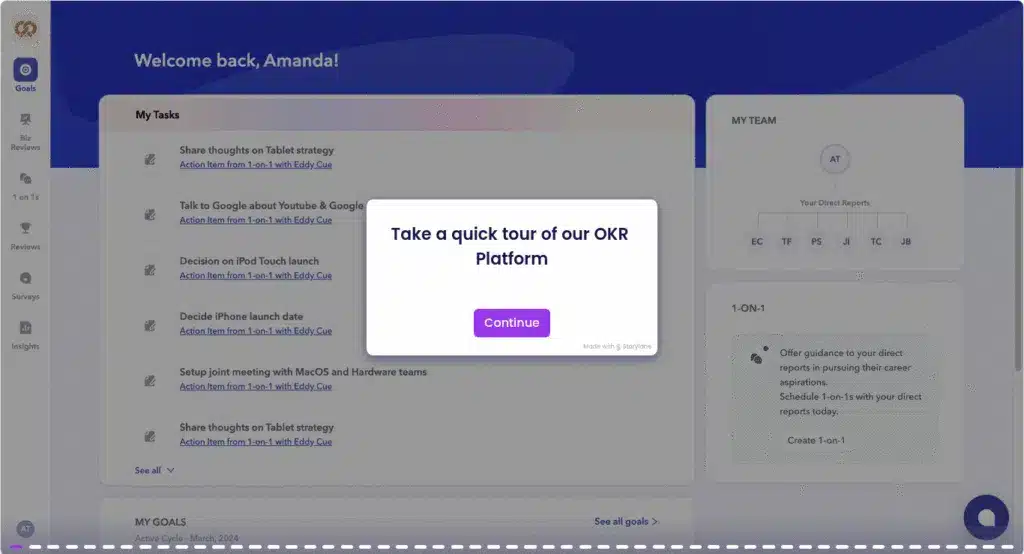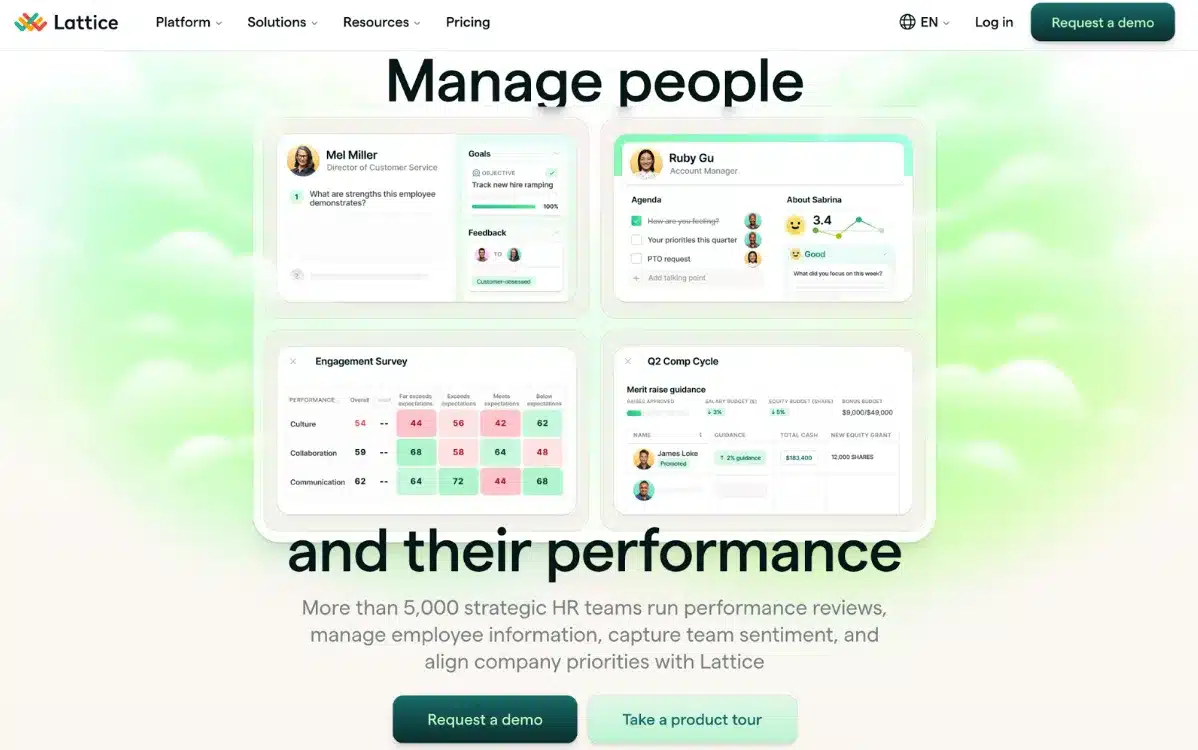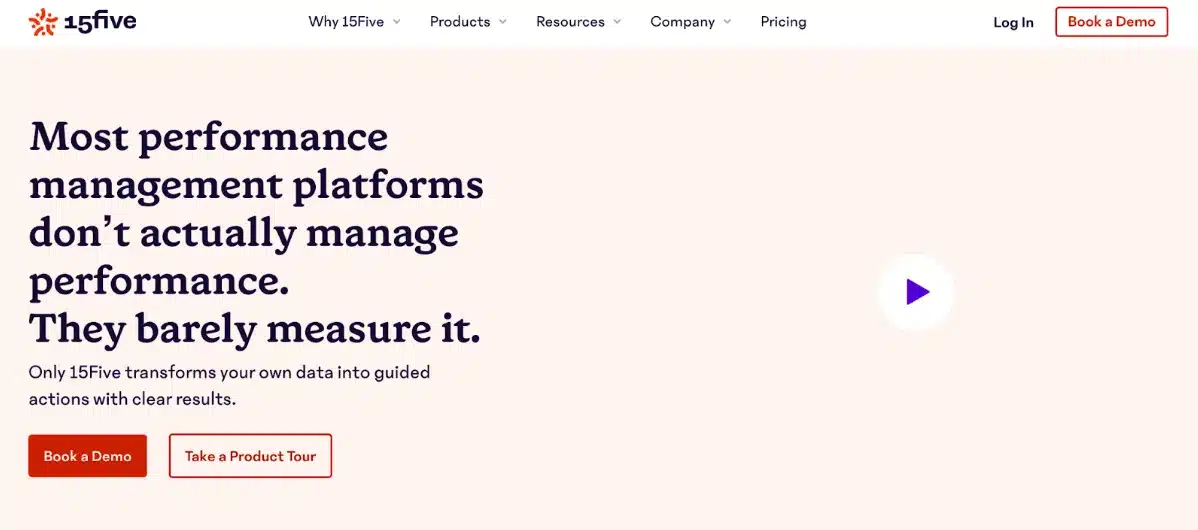Companies face a critical challenge today: a severe shortage of key talent.
90% of the companies believe that they will have a significant skill gap in the coming years. On top of this, unengaged employees who upskill on their start looking for better roles.
This leads to costly turnover and reduced overall performance. Imagine this: Your top performers, frustrated by a lack of growth opportunities, begin to explore other opportunities. They’re drawn to competitors who offer the growth and development they crave.
But it doesn’t have to be this way. You can set up an employee development plan to upskill your current workforce. And create a culture of constant development to attract new employees.
In this blog, we’ll explain what is employee development and why it matters. We’ll discuss how to create an employee development plan that not only meets the needs of your employees but also motivates them to drive your business forward.
Let’s dive in.
What is Employee Development?
Employee development is a structured and ongoing process where organizations provide opportunities for their employees to acquire new skills, enhance existing ones, and grow professionally and personally.
This process involves various activities such as:
- Training programs
- Mentorship
- On-the-job learning
- Educational courses
Employee development increases employees’ overall productivity, job satisfaction, and employee retention.
The ultimate goal of employee development is to align individual employees’ growth with the organization’s strategic goals so that the employees are prepared for future trends and opportunities.
What’s the Importance of Employee Training and Development?
Numerous studies prove the impact of employee training and development.
According to McKinsey, companies that prioritize employee development become large-scale superstars. Such companies exist in all sectors and make an average profit of $1 billion.
Organizations that prioritize employee training and development become a talent magnet for candidates who want to enhance their skills. By attracting such talent, you cultivate a skilled, engaged, adaptable workforce that sets your company up for success.
Don’t believe us?
Mckinsey says that best-in-class organizations provide 75 hours of employee training and development per employee annually, which results in higher employee retention.
And retention is just one benefit. Let’s check out other top benefits of employee development.
What are the benefits of employee development?
Attract top talent
💡McKinsey highlights that companies with well-defined employee development strategies are more successful in attracting and retaining top talent, especially in critical roles where the impact of skilled employees is most significant.
Top talent is drawn to companies that offer clear paths for growth and learning opportunities. Investing in employee development programs makes your organization more attractive to potential hires.
With the increasing job-hopping trend, particularly among younger workers, you can showcase your commitment to employee development to differentiate yourself in the competitive market.
Engage employees
Employee development is a powerful tool for increasing engagement. Employees who feel their company is invested in their growth are more likely to be motivated and committed to their work.
Development programs that align with employees’ personal goals can lead to higher job satisfaction, which directly impacts their engagement levels.
Retain employees
💡Recent PEW research proves that 63% of employees quit due to the lack of employee development opportunities.
By providing clear development paths, organizations can reduce turnover and retain their top talent. Employees are more likely to stay with a company that supports their professional aspirations and offers opportunities for advancement.
Improve business performance
Employee development ensures employees have the skills and knowledge necessary to excel in their roles. Well-trained employees are more productive and innovative. Employee training and development makes them capable of driving the company’s strategic objectives. Moreover, as employees grow, they contribute to a stronger, more competitive organization.
What are Various Methods of Employee Development?
Employee development, or staff development, involves various methods to help employees enhance their skills. These methods ensure that employees grow in multiple areas, such as communication, conflict resolution, stress management, and organizational skills.
Below are some common methods of employee development:
✅Provide on-the-job training for staff development
On-the-job training is a method where employees learn by performing their job tasks under the guidance of a more experienced colleague or supervisor. This hands-on approach benefits roles requiring practical skills, allowing employees to gain real-world work experience.
| 💡For example, a new sales associate might shadow a senior employee in a retail company to learn effective customer service techniques and sales strategies. Over time, as the associate’s confidence and competence grow, the associate can take on more responsibilities. |
You can create structured employee development plans to provide on-the-job training for employee development. Pair less experienced employees with mentors so employees can work and learn on the job. Then, provide 360-degree employee feedback.
With Peoplebox, you can set up 360-degree reviews in minutes. Expert-built templates allow you to provide different reviews and monitor performance ratings at a glance.

Source: Peoplebox 360-degree feedback
✅Coach and mentor employees
In coaching and mentoring, more experienced professionals in your company provide personalized guidance to less experienced employees. Coaching is often more performance-focused and short-term, while mentoring involves a longer-term relationship that encompasses professional and personal development.
| 💡For example, in a tech startup, a senior engineer might mentor a junior developer, offering insights into best practices, career advice, and technical knowledge. This relationship helps the junior developer navigate their career path more effectively. |
For coaching and mentoring, you can use Peoplebox’s 1:1 meetings, where senior employees can personally guide junior employees. These meetings integrate with your calendar and Slack channel, so you don’t have to use separate platforms to conduct meetings.
1:1 meetings come with talking points so you can start the conversation immediately.

Source: 1:1 meeting by Peoplebox
✅Offer formal education programs
Formal education programs involve structured learning experiences such as workshops, courses, or certifications. These programs are ideal for employee development as they help acquire new skills not easily obtained through on-the-job training.
You can support formal education by offering:
- tuition reimbursement
- access to online courses
- specialized training by educational institutions
| 💡For example, a marketing professional in a large corporation might enroll in a digital marketing certification course to stay updated with the latest industry trends and tools, ensuring their skills remain relevant in a rapidly changing field. |
✅Cater to the leadership development needs of an employee
Leadership development prepares senior employees, such as managers, for better leadership roles. It enhances their management, strategic planning, and decision-making skills. Managers can learn from several individual development examples, such as:
- Participating in problem-solving workshops
- Role-playing to learn negotiation seminars
- Attend coaching seminars
You can also identify other high-potential employees and provide them with the necessary tools and opportunities to develop their leadership capabilities. To build leadership skills, you can give access to:
- Networking events
- Leadership forums
- Executive mentorship programs
You can also enroll those employees in challenging projects or roles to push them out of their comfort zones.
| 💡For example, in a multinational company, you can select a mid-level manager for a leadership development program where they receive training on managing cross-functional teams, leading strategic initiatives, and making data-driven decisions. |
How to Set Powerful Employee Development Goals?
You must set effective employee development goals to align individual growth with your organization’s objectives. Here are some tips for setting powerful employee development goals:
✅Align employee development goals with business objectives
You should link employee development goals to your organization’s broader business objectives. This way, you develop the skills and competencies to drive the company forward.
For example, if a business focuses on digital transformation, you can set goals around enhancing digital skills or leadership in technology projects.
✅Create SMART goals
What are SMART Goals? SMART goals are specific, measurable, achievable, relevant, and time-bound.
Employee development goals should follow the SMART criteria. This clarity helps employees understand precisely what is expected of them and allows for easier progress tracking.
For instance, rather than setting a vague goal like “improve communication skills,” a more effective goal would be to “complete a professional communication course and apply new skills in weekly team meetings over the next three months.”
Peoplebox’s OKR Management allows employees to set and track their own development goals in alignment with the organization’s objectives. It also provides transparency and accountability, ensuring that both employees and managers are on the same page.
💡Imagine an employee at a tech company aiming to lead a major product launch. With Peoplebox, they can break down this goal into clear milestones, like finishing the prototype or completing user testing.
The employee and their manager can monitor progress on the Peoplebox dashboard to stay on track and make adjustments as needed. This transparency keeps everyone aligned and increases the chances of a successful launch. It also helps the employees build their project management skills.

Source: Peoplebox OKR management
✅Focus on both short-term and long-term development
While short-term goals are essential for immediate improvements, long-term goals are crucial for career development. You should encourage employees to set a mix of goals that address immediate performance needs and future career aspirations.
Here are some examples of short and long-term goals for the employee development process:
| Short-term goal (3-6 months) | Long-term goal (1+ years) | |
| Skill development in data analysis | Learn to use a data visualization tool like Tableau | Become a certified data analyst by passing a recognized certification exam within the next two years. |
| Leadership development | Attend a leadership workshop or seminar focused on effective team management. | Lead a cross-functional project team within the next year and aim to transition into a managerial role within the next two years. |
| Improving technical expertise | Take a course on a specific programming language (e.g., Python) | Develop and deploy a significant in-house software tool. Aim to become a senior developer or tech lead role within two years. |
✅Provide continuous feedback
Setting goals is not a one-time activity. Continuous feedback and regular check-ins are essential to ensure that goals remain relevant and achievable. HR should create a culture where feedback is an ongoing process, allowing goals to be adjusted as necessary based on changing circumstances or new opportunities.
✅Empower employees to take ownership
58% of employees prefer to learn at their own pace through on-demand courses. Offer a variety of on-demand courses and resources that employees can access at their own convenience.
This flexibility allows them to learn at their own pace. They can absorb and apply new skills without feeling constrained by rigid schedules.
Top Tools to Get You Started with Employee Development
1. Peoplebox

Source: Peoplebox AI
Peoplebox is a comprehensive employee development and performance management platform designed to help organizations align their teams, manage performance, and foster employee engagement. It integrates seamlessly with popular work tools like Slack, Jira, and Asana, making it easy for your team to stay on track with their goals and development plans.
Key features of Peoplebox Employee Development:
- OKR management: Align employee development goals with company objectives, ensuring that personal growth contributes to organizational success
- 360-degree feedback: Gather comprehensive feedback from peers, managers, and direct reports to provide employees with actionable insights for their development
- 1:1 meetings: Facilitate regular check-ins between employees and managers to discuss progress, set new goals, and address any development needs
- Performance reviews: Conduct tailored performance reviews that focus on both current performance and future development opportunities
- Pulse surveys: Collect employee feedback on your staff development activities with pulse surveys
“Peoplebox has the right structures in place for an organizational leader to review the progress made toward the goals taken. It helps give an overall exec view and a more granular MoM view when needed.”
Vijeth Pandit, Senior Director, Razorpay

2. Lattice

Lattice is a people management platform that helps companies manage performance, develop talent, and build a strong company culture. It focuses on continuous performance management, employee engagement, and development.
Key features for employee development:
- Performance management: Track and manage employee performance with regular reviews and continuous feedback loops
- Goal setting: Align individual employee goals with broader company objectives to ensure everyone is working towards the same outcomes
- Career development planning: Help employees plan their career paths within the company by identifying key skills and experiences they need to advance
Leapsome

Leapsome is an all-in-one people enablement platform that drives employee engagement, performance, and development. It offers tools for managing feedback, goals, and learning, making it a powerful option for employee development.
Key features for employee development:
- Personalized learning paths: Create custom learning journeys for employees based on their roles and development needs
- Feedback cycles: Facilitate continuous feedback between employees and managers to encourage ongoing development and growth
- Goal management: Set and track development goals that align with both personal and organizational objectives
4. CultureAmp

CultureAmp is an employee engagement platform focusing on employee development and performance management. It provides insights and tools to help organizations build a positive and productive workplace culture.
Key features for employee development:
- Developmental 360s: Conduct comprehensive 360-degree reviews specifically focused on employee development
- Continuous feedback: Enable employees to receive ongoing feedback to support their growth and development
- Engagement surveys: Use insights from employee engagement surveys to identify areas for development and tailor programs accordingly
5. 15Five

15Five is a performance management platform that supports performance and development needs. It helps companies build a high-performance culture through continuous feedback, engagement, and recognition.
Key features for employee development:
- Check-ins: Regular weekly check-ins between managers and employees to discuss progress, challenges, and development opportunities
- Continuous feedback: Encourage a culture of constant feedback to help employees improve and develop in real-time
- Career development: Tools to help employees map out their career development paths and set goals that align with their aspirations
How Do You Create an Employee Development Plan for Your Organization with Peoplebox?
Nowadays, employee development is not just a nice-to-have but a strategic necessity. Now that you’re aware of its numerous benefits, it’s time to execute the process. Peoplebox helps you do just that.
Peoplebox offers features such as OKR Management, Performance Reviews, 1:1 Meetings, 360-degree Feedback, and People Analytics to support your employee development goals.
Start with this free individual development plan template to systematically outline your goals.
In the template, describe your goals, deadlines, and resources needed. Then, list the actionable steps to reach your goals.

Source: Individual development template
Start finishing action steps one by one to move closer to your goals. Measuring the success of these efforts through employee development metrics ensures that your organization can continually refine and improve its development strategies.
By leveraging Peoplebox, you can build a continuous learning and development culture that drives individual and organizational growth. Book the demo to Peoplebox today.








